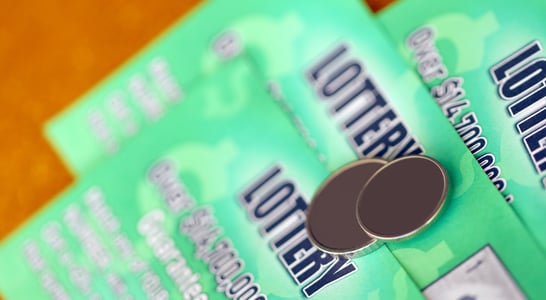
Buy Nothing Day
Give yourself a day to experience the simple joys of life, and discover the thrill of finding new adventures without spending a penny.
When was the last time you went a whole day without buying anything? In this day and age, is it actually possible to buy nothing for twenty four hours? Supporters of ‘Buy Nothing Day’ think it is.
And what’s more, they think we should all try it. At its core, Buy Nothing Day is a protest against the consumerism the organizers felt was necessary in our world, governed by the need to “have things”.
Buy Nothing Day is a pretty significant day, which is celebrated by a lot of people all around the world. It is essentially a global day of protest against consumerism. It is held on the day following U.S. Thanksgiving in North America, Sweden, Finland, and the United Kingdom.
Everywhere else, it is held on the day after. No matter what day you choose to celebrate Buy Nothing Day on, it is all about drawing attention to the issue of overconsumption. Whether this is an issue you are passionate about or not, you can certainly look into and help to understand it more.
History of Buy Nothing Day
Buy Nothing Day was founded in Vancouver, Canada by artist Ted Dave in September of 1992. It is celebrated on the Friday after American Thanksgiving (the day also infamously known as ‘Black Friday’).
It is considered a day for society to assess the overconsumption problem. It was not until 1997 that a lot of countries decided to move the date to the Friday following American Thanksgiving, i.e. Black Friday. This is one of the world’s busiest shopping dates, so holding it on this date obviously has a very symbolic meaning.
Anyone who has ever seen what happens in North America during the Black Friday sales understands all too well why it was high time that we take a step back and look at ourselves, our behavior, and contemplate the meaning of all of the Black Friday madness.
Soon after Buy Nothing Day was created, campaigns to have a similar day of reflection started appearing in the United States, the United Kingdom, Israel, Austria, Germany, New Zealand, Japan, the Netherlands, France, and Norway. More than 65 nations currently participate in it.
Adbusters, a company responsible for the inital promotion of Ted Dave’s idea for Buy Nothing Day, states that the day “isn’t just about changing your habits for one day” but “about starting a lasting lifestyle commitment to consuming less and producing less waste.”
There are a lot of different events and activities that take place on this date around the world. For example, in Rhode Island, the Buy Nothing Coat Exchange has been going on for around 20 years, and it is something that has spread to a lot of other places. For example, in Oregon, Utah, and Kentucky, there is a similar Winter Coat Exchange that happens on this date.
Buy Nothing Day Timeline
1946
Consumerism takes off in America
Following World War II, the United States and other nations began trying to rebuild their societies. After some years of doing without due to war efforts, people were excited to have no restrictions placed on their buying habits.[1]
1968
Buy Nothing Christmas begins
This year, Ellie Clark and her family made it known that they would completely ignore the consumerist elements of Christmas.[2]
1989
Adbusters magazine begins in Canada
Kalle Lasn (a former advertising industry executive) and a group of anti-consumerists begin the magazine from Vancouver as an antidote to what they saw as corporate greed. The magazine now has a dedicated circulation of more than 70,000, plus 20,000 online readers.[3]
1992
Inaugural Buy Nothing Day
Founded by Ted Dave, an artist in Vancouver, Canada, the idea for Buy Nothing Day is to get people into the habit of buying nothing for 24 hours (or more!) in the fight against consumerism.[4]
1997
Buy Nothing Day moved to November
In an effort to counterbalance all of the shopping and consumerism typical for the day after American Thanksgiving, Buy Nothing Day was moved to the day after the holiday, which is typically known as Black Friday. The date changes each year depending on the date of Thanksgiving (which is celebrated on the fourth Thursday of November).[5]
1997
Buy Nothing Coat Exchange begins in Rhode Island
In an effort to help those in need and reduce consumerism, the state’s Green Party came up with the idea collect and give away winter coats on Black Friday.[6]
2000
Adbusters campaigns are denied
With a plan of countering the strong consumerism mentality, Canadian company Adbusters, a sponsor of Buy Nothing Day, is denied advertising by almost all of the major North American networks (except CNN). Eventually, however, ads for the event began to show up not only in the US, but also in many European countries, as well as Israel, Japan and New Zealand.[7]
2001
Buy Nothing Christmas becomes official
A group of Canadian Mennonites decided to make the anti-consumerist movement of the Christmas holiday official.[8]
2011
Occupy Wall Street begins
A movement of protesters is activated (initially by Adbusters) in New York City to have a months-long sit-in in connection with anti-consumerism goals. The impact has inspired people all over the world but it remains to be seen what the impact will be for the future.[9]
2011
Buy Nothing Day gains new nickname
In a nod to the Occupy Wall Street Efforts, Buy Nothing Day this Year is affectionately known as “Occupy Xmas”.[10]
How to celebrate Buy Nothing Day
People who observe ‘Buy Nothing Day’ can do many things to express their objection to our consumer-based culture. They may simply stay home with friends and family rather than going shopping.
Some organize a so-called “zombie walk”, during which all of the participating “zombies” lurch around stores, supermarkets and shopping malls aimlessly, buying nothing, and staring ahead blankly. This is used to raise awareness about Buy Nothing Day, as the “zombies” will inevitably be asked what they are doing and why, and then can proceed to explain their point of view.
Some people have taken advantage of the lack of shopping on that day, and used the time to instead celebrate nature and the immense amount of beauty it offers us, free of charge. This can be done by spending the day in the countryside or the mountains, or even in a park, resting in the sunshine and enjoying the breeze.
Some other participants stand in a shopping mall with a pair of scissors and a poster that advertises help for people who want to put an end to their mounting credit card debt and shopping addiction with one simple cut.
A strategy employed by a group of participants in the 2009 Wildcat General Strike was to not only refrain from shopping, but keep all of their electric appliances off during the entire day as well, not travel anywhere by car, and not use their cell phones.
Some argue that ‘Buy Nothing Day’ can be the start of a life-changing lifestyle commitment, where others claim it’s meaningless, as observers simply buy more the following day. Either way, there’s no doubt that going without buying anything for an entire day is quite a challenge in the modern world, and will serve to make you think about what your life is really about.
If you want to celebrate Buy Nothing Day, we would certainly recommend that you do a little bit of digging online to see whether there are any events going on in your local area. There are a lot of different activities and events that take place around the world. This includes everything from public protests and zombie walks to credit card cut-ups and free, non-commercial street parties. If there is not an event going on in your local area, you may even want to consider being the one to organize something!
You can also use this day to understand the different effects of overconsumption. Some people, including scientist Paul Ehrlich, believe that overconsumption and overpopulation represent the biggest central environmental problem the world faces today. He has stated:
“If we fail to bring population growth and overconsumption under control, then we will inhabit a planet where life becomes increasingly untenable.”
It is a good idea to spend some time on this day learning more about overconsumption. You can read up on what overconsumption really means for our planet and the other negative effects it has, as well as understanding why we overconsume in the first place. Why do we always feel like we need more stuff? A lot of people reading this will look around their room right now and see plenty of things they don’t need, right? Why not think about better ways to use these things? For example, you could donate them to people that need them or you could recycle them into something that you actually require.
Also on ...
View all holidaysNational French Toast Day
Slices of bread soaked in a sweet, eggy bath, then fried to golden perfection, making mornings delicious and satisfying.
National Illustration Day
Bringing stories to life through captivating visuals, shaping narratives with unique styles and creative expressions.
Native American Heritage Day
From the stunning art to the deep spirituality, Native American heritage is a rich tapestry woven through time.
We think you may also like...
National Tourist Appreciation Day
When tourists visit a new place, they bring new perspectives, a boost to the local economy, and a chance for locals to share their culture.







